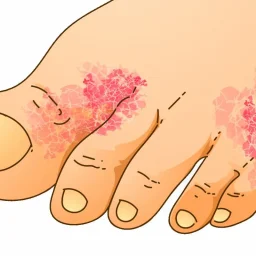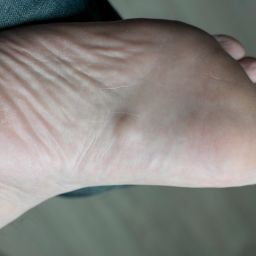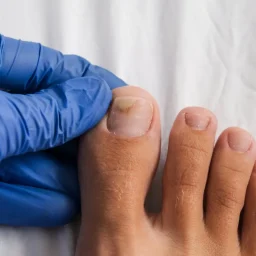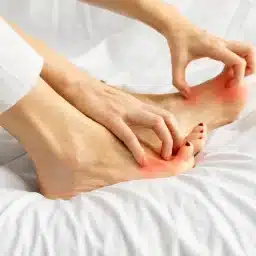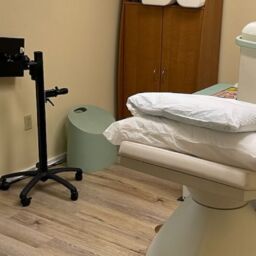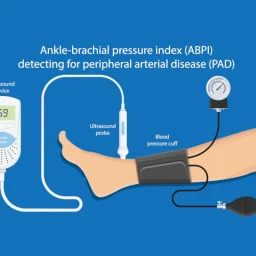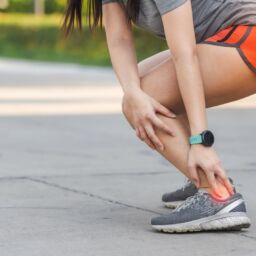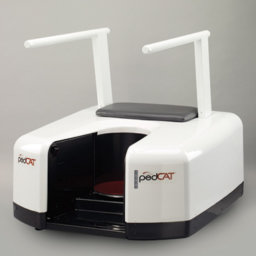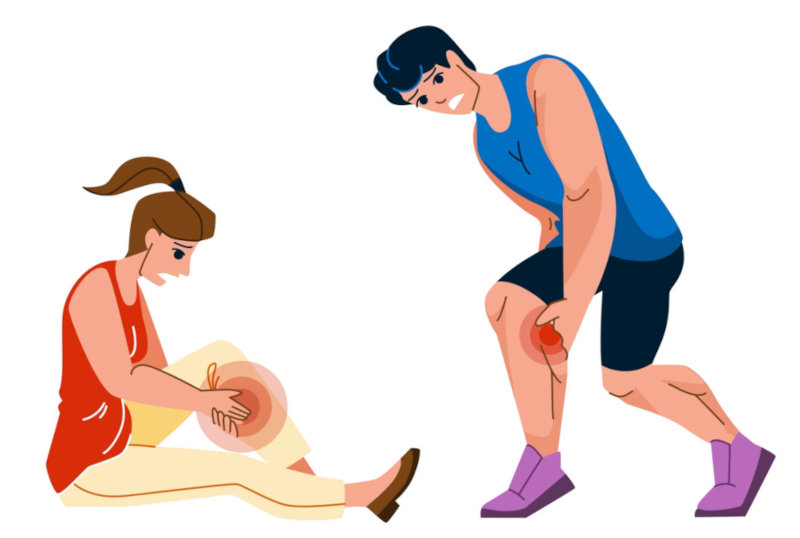
A common question for sports players, trainers and physicians, “What are effective leg cramps treatments?” Leg cramps, also known as “charley horses“, are abrupt and excruciating muscle contractions, frequently manifesting in the calf muscles. These episodes, notorious for their unpredictability, can disrupt even the most routine daily activities, inflicting considerable discomfort upon patients.
This article is dedicated to unraveling the enigma of leg cramps, delving into their complex causes, unmistakable symptoms, and the array of effective treatment options available.
While specific statistics about leg cramps can vary depending on factors such as age, gender, and underlying health conditions, here are some general insights into the prevalence and characteristics of leg cramps:
- Common Occurrence: Leg cramps are a widespread issue, affecting people of all ages. They are particularly common in older adults.
- Nighttime Leg Cramps: Nocturnal leg cramps, which occur during sleep, are reported by approximately 50% of adults at some point in their lives.
- Frequency: Some individuals experience leg cramps infrequently, while others may have them several times a week.
- Duration: Leg cramps typically last for a few seconds to a few minutes, but the residual muscle soreness can persist for hours.
- Pregnancy: Pregnant women often experience leg cramps, with up to 30% reporting this symptom during pregnancy.
- Athletes: Athletes and individuals who engage in intense physical activity are also prone to leg cramps, especially if they do not stay adequately hydrated.
- Age: Older adults are more likely to experience leg cramps, possibly due to age-related muscle fatigue and changes in circulation.
- Dehydration: Dehydration is a common trigger for leg cramps, emphasizing the importance of staying hydrated, especially in hot weather or during physical activity.
Unlocking the Causes of Leg Cramps
Leg cramps can arise from various underlying factors. Muscle fatigue and overuse, often the result of strenuous physical activities, can lead to the muscles becoming exhausted and subsequently cramping. Electrolyte imbalances, particularly deficiencies in essential electrolytes like potassium, sodium, calcium, or magnesium, are common culprits in triggering leg cramps. Poor blood circulation to the legs, which can occur due to extended periods of sitting or standing, can contribute to muscle cramping. Additionally, certain medications, such as diuretics, have the potential to disrupt electrolyte balance, leading to leg cramps. Conditions like sciatica or herniated discs can also come into play, as they may compress or pinch nerves in the legs, resulting in cramping sensations. Understanding these underlying causes is crucial for effective management and prevention of leg cramps.
Symptoms of Leg Cramps
- Sudden Pain and Tightness: Leg cramps typically present as sudden and intense pain and tightness in the affected muscle, frequently in the calf.
- Visible Muscle Contraction: During a cramp, the affected muscle often contracts visibly, creating a bulging appearance.
- Tenderness and Stiffness: After a cramp subsides, the muscle may remain tender and stiff, gradually improving with time.
Treatment for Leg Cramps
To effectively address leg cramps and alleviate discomfort, incorporating these strategies is crucial:
- Stretching and Massage: When leg muscles cramp, gently rub and massage the affected area to relieve the pain and tension. Regular stretching of leg muscles can also serve as a preventive measure against cramps.
- Hydration: Staying properly hydrated throughout the day is key, especially during physical activities, as it can reduce the likelihood of leg cramps.
- Balanced Diet and Electrolyte Intake: Maintain a balanced diet that includes potassium, magnesium, calcium, and sodium-rich foods to prevent electrolyte imbalances, a common trigger for cramps. Foods like bananas, leafy greens, nuts, and dairy products are beneficial.
- Warm-Up and Cool Down Exercises: Engaging in suitable warm-up and cool-down exercises before and after physical activity helps prepare leg muscles, minimizing fatigue and cramping.
- Footwear and Supportive Insoles: Choose appropriate footwear with ample support and cushioning to prevent leg cramps. Custom insoles, recommended by podiatrists, can further distribute pressure and reduce the risk of cramps.
- Medication Adjustments: If leg cramps are a side effect of medication, consult with a healthcare provider to discuss potential adjustments or alternative medications for effective management.
- Physical Therapy and Podiatric Intervention: Podiatrists can play a vital role in leg cramp treatment. They design personalized exercise plans to strengthen muscles and improve flexibility. Additionally, podiatrists assess gait and foot structure, recommend suitable footwear, and orthotics to prevent cramps effectively.
By following these comprehensive strategies, individuals, including older adults and those with conditions like peripheral neuropathy or high blood pressure, can minimize the occurrence of leg cramps and maintain optimal leg muscle health. Remember, if a thigh cramp or calf muscle cramp occurs, stretch and massage the muscle gently, and consider applying heat with a heating pad or a warm bath. Stretching the cramped muscle, such as lifting the leg up toward your buttock, can offer relief and prevent future cramps.
How You Can Take Control of Your Leg Cramps
Leg cramps can be distressing, but understanding their causes and symptoms is the first step towards effective treatment and prevention. By adopting a balanced diet, staying hydrated, and incorporating stretching and strengthening exercises, you can reduce the frequency and intensity of leg cramps. Additionally, seeking guidance from a podiatrist can provide valuable insights and personalized interventions to manage and alleviate leg cramps effectively. If leg cramps persist or worsen, consult a healthcare professional for a comprehensive evaluation and appropriate treatment plan.
Visit us today and bid goodbye to your lower extremity concerns. Make an appointment with our board-certified podiatrists here.

